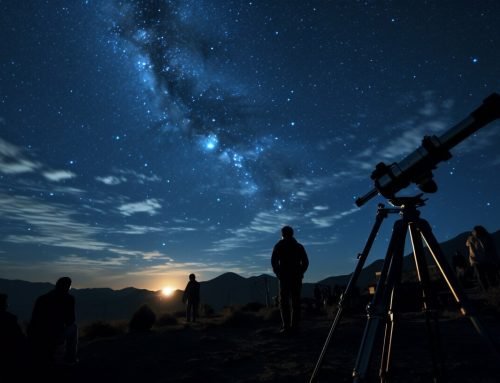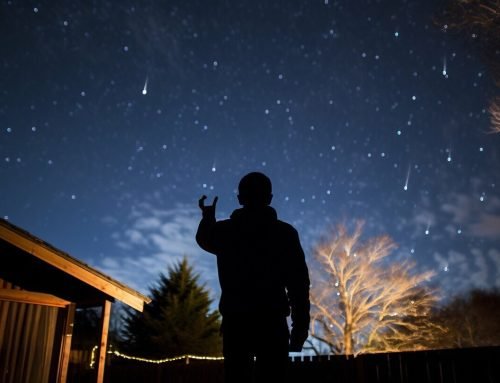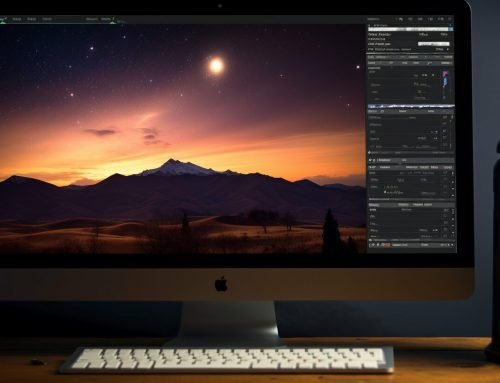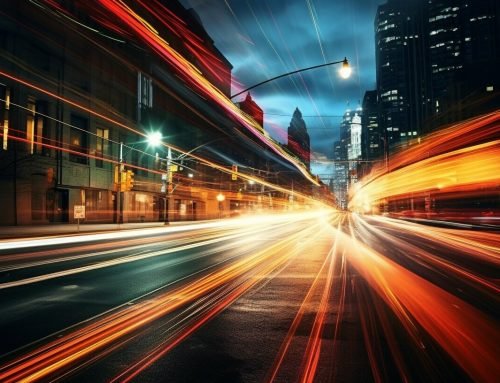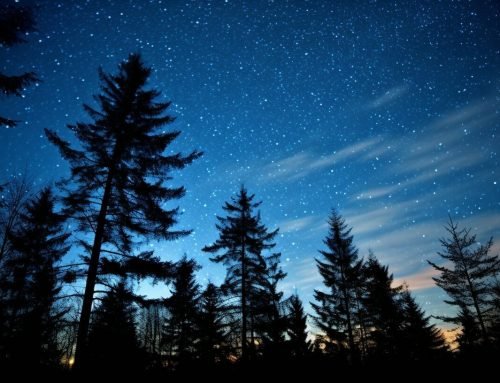If you’re interested in capturing stunning images of the night sky, investing in the right gear is essential. Astophotography requires specific equipment that can withstand long hours of exposure to the elements while capturing the beauty of the cosmos. In this article, we’ll dive into the essential astrophotography gear that you’ll need to start your journey into the stars.
Key Takeaways:
- Investing in quality astrophotography gear is essential for capturing stunning images of the night sky.
- Essential gear includes a suitable camera, telescope, lenses, and accessories.
- There are specific features to look for in each piece of equipment to ensure optimal performance.
- Choosing the right gear will depend on your desired outcome and budget.
- With the right gear, you can capture breathtaking images of the night sky for years to come.
Astrophotography Camera: Capturing the Stars in Detail
When it comes to astrophotography gear, selecting the right camera is crucial. The right camera will allow you to capture the beauty of the night sky in stunning detail. Here are some factors to consider when selecting the best gear for astrophotography:
- Low-light Performance: You’ll need a camera that can handle low-light conditions well since astrophotography typically takes place at night.
- High ISO Capabilities: A camera with a high ISO range will allow you to capture images with less noise, making them appear sharper and clearer.
- Full-frame Sensor: A full-frame sensor is ideal for astrophotography because it captures more light and produces higher quality images.
- Manual Focusing Ability: Since autofocus systems may struggle in low-light conditions, manual focusing is crucial for achieving sharp images.
- Remote Shutter Release: Using a remote shutter release will minimize camera shake, ensuring sharper images.
Keep these factors in mind when looking for the perfect astrophotography camera. With the right gear for astrophotography, you can capture breathtaking images of the night sky.
Telescope for Astrophotography: Exploring the Cosmos
When it comes to astrophotography, having a suitable telescope is a must. A telescope is essential for capturing detailed images of the night sky, allowing you to explore the cosmos in all its glory.
There are several types of telescopes available, but the two most commonly used for astrophotography are the refractor and reflector telescopes. Refractor telescopes use lenses to bend and focus light while reflector telescopes use mirrors to reflect and focus light. The type of telescope you choose will depend on your astrophotography needs and budget.
For those just starting out, a refractor telescope is a great option as it is easy to use, requires little maintenance and provides clear images, making it one of the best gear for astrophotography beginners. Reflector telescopes, on the other hand, are better suited for capturing fainter objects in the night sky and are ideal for those seeking to capture more advanced astrophotography imagery.
When selecting a telescope for astrophotography, it is important to consider the aperture size, which determines the amount of light that can be captured, and the focal length, which affects the magnification and field of view. In general, larger apertures and longer focal lengths result in clearer and more detailed images, but they can also be more expensive.
Ultimately, the telescope you choose will depend on your specific needs and the type of astrophotography you want to capture. Investing in a high-quality telescope is important to ensure you capture stunning images of the night sky and have the best gear for astrophotography.
Astrophotography Lenses: Zooming in on the Stars
Using the right lenses is critical for capturing stunning astrophotography images. The ideal focal length and aperture settings depend on the type of celestial object you want to capture. Here are some considerations to keep in mind when selecting the best astrophotography lenses:
Wide-Angle Lenses
Wide-angle lenses are ideal for capturing expansive views of the night sky, including the Milky Way and auroras. Look for lenses with focal lengths between 14mm and 24mm and large maximum apertures (f/2.8 or wider) to allow for maximum light-gathering capabilities.
Standard Lenses
A standard lens can be used to capture a variety of celestial objects, including the moon, stars, and planets. Look for lenses with focal lengths between 24mm and 70mm and large maximum apertures (f/2.8 or wider) to allow for maximum light-gathering capabilities.
Telephoto Lenses
Telephoto lenses are ideal for capturing detailed images of the moon and planets. Look for lenses with focal lengths between 70mm and 300mm and large maximum apertures (f/2.8 or wider) to allow for maximum light-gathering capabilities. Consider using teleconverters to extend the focal length of your lens.
Investing in high-quality lenses can make a significant difference in the quality of your astrophotography images. Consider adding these lenses to your collection to capture stunning nighttime shots.
Astrophotography Accessories: Enhancing Your Nighttime Shots
If you’re serious about astrophotography, having the right accessories can make all the difference. Whether you’re a beginner or a seasoned pro, these tools can help you capture stunning images of the night sky. Here are some of the essential astrophotography accessories you should consider:
1. Tripod
A sturdy tripod is key to keeping your camera steady during long exposures. Look for one that’s strong enough to support the weight of your camera and lens, and adjustable enough to get the right height and angle.
2. Remote Shutter Release
A remote shutter release allows you to trigger your camera without touching it, reducing the risk of camera shake. This is especially useful when using longer exposures and for capturing time-lapses of the night sky.
3. Light Pollution Filter
If you’re shooting from a city or suburban area, a light pollution filter can help reduce the effects of artificial light on your images. This filter blocks certain wavelengths of light, allowing you to capture clearer and more natural-looking photos of the stars.
4. Star Tracker
A star tracker is a motorized device that moves your camera at the same rate as the stars in the sky. This allows you to take longer exposures without getting star trails, resulting in sharper and more detailed images.
5. Red Light Headlamp
When you’re out shooting at night, it’s important to have a light source that won’t ruin your night vision. A red light headlamp is the perfect solution, as it provides enough illumination to see your gear and adjust settings without affecting your ability to see the stars.
6. Lens Heater
In colder environments, dew can form on your lenses, which can ruin your shots. A lens heater is a small device that attaches to your lens and keeps it warm, preventing dew from forming and helping you capture clear and crisp images.
Investing in the right astrophotography accessories can take your nighttime shots to the next level. By using these tools in conjunction with the right camera, lenses, and telescope, you can create stunning images that capture the beauty of the cosmos. Keep these astrophotography tips and techniques in mind as you prepare for your next night shoot.
Conclusion
Congratulations on making it to the end of our guide to essential astrophotography gear. By now, you should have a good understanding of the equipment needed to capture stunning images of the night sky.
Invest in quality gear
Remember, investing in quality gear is essential for achieving great results in astrophotography. While it can be tempting to go for the cheapest option, it’s worth spending a little extra to get gear that will last and perform well.
Experiment and have fun
As with any form of photography, astrophotography requires experimentation to find what works best for you. Don’t be afraid to try different lenses, cameras, and accessories to find your perfect setup.
Most importantly, have fun! Astrophotography is a fascinating and rewarding hobby that can lead to some truly breathtaking images. So get out there, explore the cosmos, and capture the beauty of the night sky.
FAQ
What gear do I need for astrophotography?
The essential gear for astrophotography includes an astrophotography camera, a telescope, astrophotography lenses, and various accessories like tripods and remote shutter releases.
What should I look for in an astrophotography camera?
When selecting an astrophotography camera, look for features like low-light performance, high ISO capabilities, and the ability to capture long exposures without excessive noise.
What type of telescope is best for astrophotography?
There are different types of telescopes suitable for astrophotography, including refractors, reflectors, and compound telescopes. The best choice depends on your specific needs and preferences.
What lenses are recommended for astrophotography?
For astrophotography, lenses with a wide aperture and suitable focal length are recommended. Prime lenses in the range of 14mm to 35mm often work well for capturing the night sky.
What accessories can enhance astrophotography?
Accessories like tripods provide stability, remote shutter releases minimize camera shake, and light pollution filters help reduce unwanted light interference. These accessories can significantly enhance the quality of your astrophotography images.

